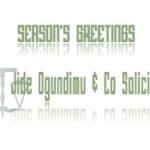The law of nuisance and the rule in Rylands v Fletcher
- These are specific torts which deal with problems arising either from disturbances which affect your enjoyment of your land, or simply disturb you as a member of the public.
- While private nuisance and the associated rule in Rylands v Fletcher are confined to interference with your rights in land, public nuisance has a wider application.
- Public nuisance is limited however, to claimants who have experienced special damage above and beyond that suffered by the rest of the public.
The various types of nuisance
- Private nuisance – Is an ‘unlawful interference with a person’s use or enjoyment of land, or some right over, or in connection with it’.
- Public nuisance – in contrast, is both a crime and a tort. It was defined by Romer LJ in Attorney-General v P.Y.A Quarries Ltd (1957) 2 QB 169: ‘any nuisance is “public” which materially affects the reasonable comfort and convenience of life of a class of her Majesty’s subjects. The sphere of the nuisance may be described generally as “the neighbourhood”; but the question whether the local community within that sphere comprises a sufficient number of persons to constitute a class of the public is a question of fact in every case’.
- Statutory nuisances are simply nuisances which operate by virtue of particular statutes. E.g Part iii of the Environmental Protection Act 1990, which is primarily concerned with matters of public health.
- The rule in Rylands v Fletcher – This is a rule of liability imposed on a person due to an escape of a non-natural substance from the defendant’s land. It will only apply where the loss suffered is reasonably foreseeable and that it is, in reality, an extension of the tort of private nuisance to isolated escapes from land. See Transco. Plc v Stockport MBC (2003).
Private Nuisance – 3 types can arise in practice
- Physical injury to land ( for example, by flooding or noxious fumes)
- Substantial interference with the enjoyment of the land (e.g smells, dust and noise)
- Encroachment on a neighbour’s land, for example, by spreading roots or overhanging branches, which is of minor significance.
Who can sue?
- Only those with rights in their land , namely an interest in land or exclusive possession will be able to See Malone v Laskey (1907) and Hunter v Canary Wharf Ltd (1997)
- It therefore follows that only landowners and tenants can sue, but excludes licensees, e.g lodgers.
- So, if ones name is not on the title deeds of the land or property, they cannot sue in private nuisance.
- It has been argued by many commentators that this exclusion is not consistent with Article 8 of the European Convention on Human Rights.
What amounts to Private Nuisance?
- See the definition of that of Lord Wright in Sedleigh-Denfield v O’Callaghan (1940) AC 880 at p.903 (Pg 154 of your study guide)
- The test is one of ‘reasonable user’, balancing the interests of the defendants to use their land as is legally permitted against the conflicting interests of claimants to have quiet enjoyment of their land.
- It is not a test of reasonable care – therefore, the defendant cannot use as a defence, that he took all reasonable care to prevent the nuisance from occurring. See Rapier v London Tramways Co (1893).
- The court will look at the result of the defendants conduct. Such a balancing exercise places a considerable amount of discretion on the judge.
- It should be noted, however that the ordinary use of ones home will not amount to a nuisance, even if it discomforts the neighbour due to poor soundproofing or insulation. See Southwark LBC v Mills; Baxter v Camden LBC (2001).
Factors determining reasonable use
- Damage to property or personal discomfort – The courts are willing to find a nuisance where physical damage to property has been caused. Personal discomfort will normally have to be substantial to merit a response. See Walter v Selfe (1851)
- The nature of the locality- The nuisance will be judged according to the area in which it occurs. Planning permission is not enough to change the locality, although this may occur as a matter of fact due to investment in the area. See Gillingham Borough Council v Medway (Chatham) Dock Co. Ltd (1993) e.g. the transformation of the London Docklands from an industrial area.
- Duration – The longer and more frequent the interference, the more likely it will be found to be a nuisance. See De Keyser’s Royal Hotel Ltd v Spicer Bros Ltd (1914) and Crown River Cruises Ltd v Kimbolton Fireworks Ltd (1996). However the claimant is more likely to sue under the rule under Rylands v Fletcher.
- Utility of the defendants conduct – Not important, as the courts are more interested on the results of the defendant’s conduct on the claimant and not the community as a whole. It might however influence the courts, in granting an injunction. See Miller v Jackson (1977).
- If the complaint is based on the abnormal sensitivity of the claimant, the court will not See Robinson v Kilvert (1889) and Heath v Mayor of Brighton (1908).
- The state of mind of the defendant would also seem to be relevant in assessing whether the defendant’s use of his or her land is reasonable. e.g. revenge on the claimants nuisance as in the case of Christie v Davey (1893). See also Hollywood Silver Fox Farm Ltd v Emmett (1936)
Who can be sued?
- Employers – Where the occupier of the land exercises control over employees, who cause a nuisance in the course of employment, he/she will be liable. This rule also extends to independent See Matania v National Provincial Bank (1936)
- An occupier who has adopted or continued a nuisance – See the leading case of Sedleigh-Denfield v O’Callaghan (1940), which also applies to public In this case the local authority without the defendant’s permission had placed a drainage pipe on his land which eventually caused damage to the plaintiff’s property. The defendant was held liable, as he had adopted the nuisance by using the drain for his own purpose.
Liability thus arises in 2 ways:
- Adopting a nuisance – using the state of affairs for your own purposes;
- Continuing a nuisance – actual or presumed knowledge of the state of affairs, failing to take reasonably prompt and efficient steps to abate it.
Finding liability
- Lord Willberforce in Goldman v Hargrave (1967), added that the defendant’s conduct should be judged in the light of his or her resources and ability to act in the e.g. If the defendant is poor, and abatement will require a vast expense, the defendant will not be considered negligent. Equally, less will be expected of the infirm than of the able bodied. See Holbeck Hall Hotel Ltd v Scarborough BC (No 2) (2000)
The landlord – 3 situations where landlord can be sued.
- Where the landlord has expressly or impliedly authorised the nuisance
- Where the landlord knew or ought to have known of the nuisance before See Brew Bros Ltd v Snax (Ross) Ltd. (1970)
- Where the landlord covenanted to repair or has a right to enter to repair (see Mint v Good); sections 11 and 12 of the Landlord and Tenant Act 1985; and section 4 of the Defective Premises Act 1972).
Controversies
- Basic rule – The court will examine the purpose for which the premises are let and consider whether the nuisance was a necessary consequence of the Complications however arise as in Smith v Scott (1973), where a local authority was held not to have authorised a nuisance caused by a problem family in which it was aware of, as the tenancy agreement issued by the defendant expressly prohibited the commission of the family’s acts.
- Also read the cases of Hussain v Lancaster CC (2000) and Lippiatt v South Gloucestershire (2000). Please distinguish the decision held in these 2 cases.
Defences
- Statutory authority – If the nuisance is caused by the activities of a local authority or any other body, it may be a defence that it is acting within the scope of its authority, and therefore authorised by Parliament to act in this See Allen v Gulf Oil Refining ltd (1981). However sometimes the Act might contain a nuisance clause, which might prevent the body from using the statute as a defence in a case in nuisance. See Department of Transport v N.W. Water Authority (1983)
- Twenty Years prescription – Provides a defence where the nuisance has interfered with the claimant’s interest in land for more than 20 This however does not apply to Public nuisance, and the time will only start when claimant was aware of the nuisance. See Sturges v Bridgman (1879)
- The act of a stranger – 3rd party interference without permission of See Sedleigh-Denfield v O’ Callaghan (1940)
Remedies
- Injunctions – This is a discretionary remedy and not a right to the claimant. The court may decide to give damages ‘in lieu’ of an injunction – section 50 Supreme Court Act 1981 and Shelver v City of London Electric Lighting Co (1895)
- Abatement – This is suitable for minor problems, such as cutting overgrown branches touching the claimant’s See Delaware Mansions Ltd v Westminster City Council (2002).
- Damages – In Private nuisance damages will be awarded for interference with his/her interest in land, be it physical and non physical, but not for personal See Hunter v Canary Wharf (1997).
The rule in Rylands v Fletcher – All 4 points below must be satisfied.
- The defendant brings on his lands for his own purposes something likely to do mischief
- Which escapes ( see Read v Lyons & Co Ltd (1947) )
- Due to a non-natural use
- Which causes foreseeable
The rule in Rylands v Fletcher
- The last 2 of the 4 points have caused difficulty for the courts.
- Lord Goff in Cambridge Water V Eastern Counties Leather plc (1994) established that only foreseeable harm would be recoverable.
- Transco plc v Stockport MBC (2003) – The rule in future be confined to exceptional circumstances where the occupier has bought some dangerous thing onto his land which poses an exceptionally high risk to neighbouring property should it escape, and which amounts to an extraordinary and unusual use of land.
Who can sue under the rule in Rylands v Fletcher?
- It was unclear whether the claimant had to have an interest in the land before he could sue.
- Transco plc v Stockport MBC (2003) however changed that. The case confirmed that the claimant must have a right in land to use.
Defences
- Unforeseeable act of a stranger – The act must be due to the act of a stranger, who the defendant has no control See Box v Jubb (1879), Rickards v Lothian (1913)
- Act of GOD- The defence is defunct, due to modern Defendant will not be liable where escape was due to natural causes. Compare Nichols v Marsland (1876) and Greenock Corp v Caledonian Rly (1917)
- Statutory authority – as in Private nuisance – see Green v Chelsea Waterworks Co (1894)
- Consent – Could be express or implied. e.g. The tenant will forego his rights if the landlord installs a water tank for a block of flats, due to the benefit he gains from See Kiddle v City Business Properties Ltd (1942)
Damages for personal injury
- It was finally established in Transco pls v Stockport MBC (2003), that like Private Nuisance, there can be no claim for personal injury.
Public Nuisance – arises when:
- the interference does not affect the claimant’s land.
- but the public as a whole and the claimant has suffered special damage.
Claimant in public nuisance needs to show:
- that the nuisance has affected a class
- needs to show special damage
What is special damage?
- Damage in excess of that suffered by the public at at large.
- It must be direct and substantial and covers personal injury, property damage, loss of custom or business, delay and inconvenience
What happens if the claimant cannot show special damage?
- He/she can bring his action in tort in the name of the Attorney-General by means of a relator See Attorney-General v P.Y.A. Quarries Ltd (1957)
- By a Local Authority under section 222 of the Local Government Act 1972. See Stoke-on- Trent City Council v B & Q (Retail) Ltd.
The relevance of the Human Rights Act 1998
- Who can sue
- Increasing the landlord’s liability for the action of tenants.

- ABOUT THE TUTOR
- JIDE OGUNDIMU IS A SOLICITOR OF ENGLAND AND WALES PROVIDING LEGAL SERVICES TO MEMBERS OF THE PUBLIC. HE IS REGULATED BY THE SOLICITORS REGULATION HE HAS LEGAL EXPERIENCE IN AREAS SUCH AS LANDLORD AND TENANT LAW, ANTI-SOCIAL BEHAVIOUR, WELFARE BENEFITS, DEBT AND MONEY ADVICE, NEIGHBOUR DISPUTES, CIVIL LITIGATION, FAMILY AND ESTATE MATTERS, PRIVATE LAW AND DATA PROTECTION. HTTPS://SOLICITORS.LAWSOCIETY.ORG.UK/PERSON/19333/JIDE-BENJAMIN-OGUNDIMU
A SOLICITOR AND ADVOCATE OF THE SUPREME COURT OF NIGERIA, JIDE WAS CALLED 30 YEARS AGO. HIS FIRM IN NIGERIA, JIDE OGUNDIMU & CO SOLICITORS HTTPS://JIDEOGUNDIMUCOSOLICITORS.CO.UK/ DEAL WITH ALL ASPECTS OF LAW, INCLUDING PROPERTY CONVEYANCING, LANDLORD AND TENANT LAW, ESTATE AND WILL PLANNING, CIVIL LITIGATION, PRIVATE LAW, INFRASTRUCTURE AND MEDIA LAW.
- ALL RIGHTS RESERVED. NO PART OF THIS PUBLICATION MAY BE REPRODUCED, DISTRIBUTED, OR TRANSMITTED IN ANY FORM OR BY ANY MEANS, INCLUDING PHOTOCOPYING, RECORDING, OR OTHER ELECTRONIC OR MECHANICAL METHODS, WITHOUT THE PRIOR WRITTEN PERMISSION OF THE AUTHOR.


